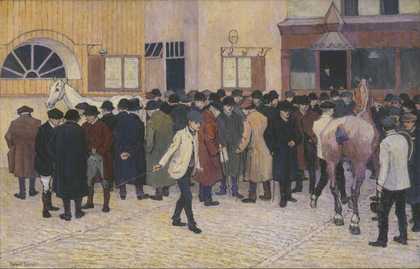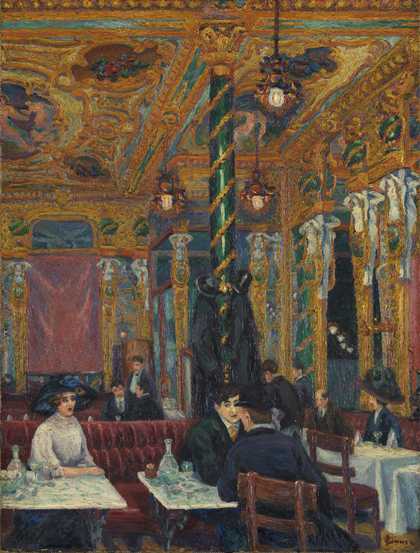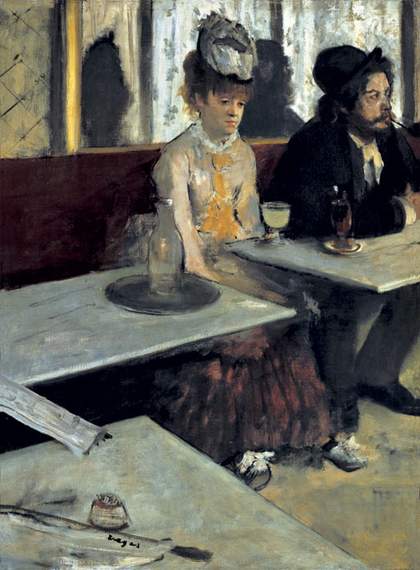In 1965, aged nine, I attended my first private view – for an exhibition celebrating the centenary year of the birth of my great-grandfather, Robert Bevan (1865–1925). He was, I’m told, a remote figure, always regarded as a ‘gentleman amateur’ by the family. In recent years I have discovered more than 1,120 of his works. Bevan was no dabbler. He was a highly organised and very productive artist, and were it not for his tendency to destroy pictures with which he was not happy, there would be more.
Born in Hove, Sussex, into a prosperous family with long associations with Barclays Bank, Bevan was a keen horseman and artist with no desire to follow his father’s profession. After studying art in London in 1888, he attended the Académie Julian in Paris, where fellow students included Paul Sérusier, Pierre Bonnard, Édouard Vuillard and Maurice Denis. He visited Brittany in 1890, staying among the artists in Pont-Aven, and returned the following year and in 1893. (An interim trip to Morocco appears to have involved more foxhunting than drawing, with him becoming master of the Tangier hunt in his second season.) There is no evidence that he ever met van Gogh, but, to me, the influence seems obvious in the swirling trees and landscape of his Breton drawings. He was certainly friendly with Paul Gauguin, who gave him several prints and was to remain an inspiration.
On his return to England in 1894, Bevan went to live on Exmoor, where he continued to hunt and paint. In 1897 he met the Polish painter Stanisława de Karłowska (known to her friends as Stasia) at the wedding of mutual friends. He would soon follow her to Poland, and a few months later they were married in Warsaw. She would join her husband on many of his painting trips and often exhibit at the same group shows
In 1900 the Bevans settled in London, in Swiss Cottage. My grandmother Edith, their first child, was born in December 1898, and several subsequent summers were spent in central Poland, where Stasia’s father owned extensive land. It was here that some of Bevan’s most radical and intensely coloured work was produced, including Morning over the Ploughed Fields c.1904. Another painting made a few years later, Courtyard 1904, was described by one critic as ‘one of the first exercises in the expressive use of pure colour in this century’. However, his first one-man exhibition in 1905 was not a commercial success. The critics found his colours garish and likened his works to ‘French Impressionism gone to the bad’. His second exhibition, in 1908, fared little better.

Robert Bevan
Horse Sale at the Barbican (1912)
Tate
However, Bevan’s paintings were noticed by members of Walter Stickert’s Fitzroy Street Group, and he was soon invited to join them. It was Sickert who encouraged him to ‘paint what really interests you and look around and see the beauty of everyday things’. Thus began a series of paintings recording the decline of the hansom cab trade, including Tate’s The Cab Horse c.1910. In 1911 Bevan and his colleagues formed the Camden Town Group. He moved away from the portrayal of the cab yards to the London horse sales, for which he is perhaps best known (see Tate’s Horse Sale at the Barbican 1912). His London street scenes, largely based on the areas of St John’s Wood and Belsize Park, were generally more favourably reviewed than his landscapes. After his death, Stasia returned to painting and produced many views of London and France over the next twenty years. She had her first solo exhibition in 1935.
Bevan’s modesty and reticence ensured that most of his works were unsold. He did, though, pass on a legacy of sorts, in that his grandson and greatgrandson work with architectural colour.



